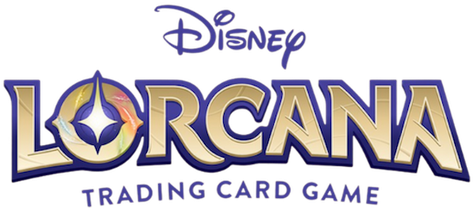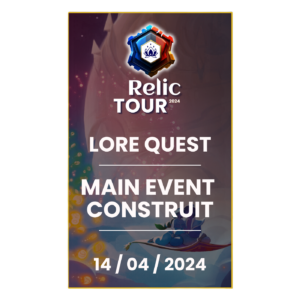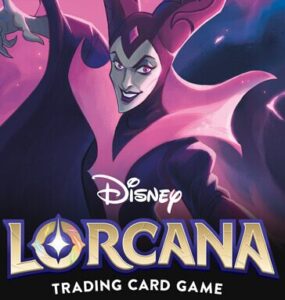Table of Contents
Introduction
After playing in both DLC Atlanta and DLC Chicago, I gained a lot of experience and opinions around the new Two Game Format that Ravensburger implemented. I went into the format with an open-mind and can honestly say that I am coming out of it with one as well!
Disney Lorcana Challenges (DLCs) are currently the highest level of competitive play in Lorcana and they are an amazing time! Any type of Lorcana player should make an effort to attend them to see the excitement and fanfare surrounding this game, which has not even been out a year!
Some thought the format was going to be a deterrent to competitive play, but I did not think it was a huge factor. However, the system is not without its flaws, so let's get into it!
Flaws with the Two Game Format
When the two-game format was first launched, as a team we had many opinions on it, and we knew the system was flawed. We initially did not go into our analysis without data and simulations, and presented information to display “how” the games could turn out to our larger community. Our first major takeaway was that it could potentially incentivize tournament players to “collude,” solely based on the fundamental flaw of the point structure (including any type of bonus point structure).
A main issue that rose to the surface, and the crux of most of the problems, was that nine rounds for a 1000-person tournament does not incentivize players to take risks. The best-of-3 format on day two helps a bit. With the higher seeded player getting to choose whether they go first in game one (hint: they do), there is a slight incentive for players to try to maximize their point gain on day one. But ultimately the risks of missing out completely on day two versus simply having a higher seed are too great. Maybe, if you are an extremely high level player, you will push for max points on day one, but most players are simply satisfied making the second day of competition (“making the cut”) which makes day one an exercise in simply trying not to drop too many points, instead of trying to get as many points as possible.
In Atlanta, with it being 2000 players, there were far less draws because there were so many players on the same records for much of the event. Therefore, more players were in contention throughout the day and hitting a certain threshold before drawing your way in also required more rounds to be played. Many players in the room found other ways to circumvent the normal flow of game play, oftentimes presenting the logic that “If we split this round, we're both eliminated. So let's just play a best-of-one and that will decide the match.” Judges agreed this was not breaking the rules and subsequently told players there would be no punishment for offering opponents this.
In Chicago, with there only being 970 players but still nine rounds, there was the opposite effect. Most players that started 4-0 drew five rounds in a row to lock themselves into points that were guaranteed for a 001-P1-041 and in good position to make the top 64, as well.
Potential Solutions
While each of these acts are concerns, I have some solutions.
Increase relevant rounds of play
Cutting to top 64 Single Elimination is incentivizing players to take more 1-1 draws in the tournaments, and far earlier than just the final round or two. We are seeing it now happening for three to four rounds, and in some fringe cases even five rounds. If day two was not a cut to Top 64 Single Elimination, but instead was more rounds of Swiss then a cut to a certain breakpoint (top 32? Top 16?), it would incentivize the players to play out the rounds in these events much longer at the top tables (rather than just splitting).
We also believe that this will cause “making the initial cut” (let’s say the top 64 and those tied with them points wise, so essentially top 100 to 150ish) to be less harsh in the “smaller” 1,000-person events where now you have the same prizing whether you win your top 64 match, lose it, or even tie someone who made the cut. Making day two is your only way of advancing past this point, but it should be similar to the larger 2,000+ person events where making day two sets up a higher prizing structure.
Your record on day one is not wiped away at all, disincentivizing the early draws we saw in Chicago because the record would carry forward from day one to day two before a second, harsher cut.
Removal of the Bonus point
The bonus point is a snowball effect to the tournament and pressuring events in a negative manner. Going 0-2 and getting zero points is already an issue, but this bonus point is affecting tournaments earlier in events than intended. While I am aware there is a “worry” that somehow an entire 1,000-player event can split 50-50 and going to a third tiebreaker would be miserable, but that option is a better answer than continuing the bonus point any further. The bonus point forces you to maximize certain rounds (typically your best matchups) and if you do not 2-0 those matchups you are further behind those that do. You go from three points in a 1-1 to seven in a 2-0, which is a large discrepancy.
As a corollary to the first point, removing the bonus point removes “safety” for the players starting 4-0-0 etc. Right now, they can simply draw in future rounds knowing they have already hit some “magical number” (44 points). Lastly the bonus point has entirely removed the tiebreakers from mattering much at all.
Internalizing the Format
While the 2-game format has been successful at keeping most tournament players playing in the event (85% of registered players in CHI completed nine rounds), I believe the overall system to still be potentially flawed, abusable, and difficult for new players to grasp. While high level players speak in “how many points do I have and how many more do I need,” that is difficult for a majority of the community to understand compared to the normal best-of-three record discussions. The current system creates intentional draws (splits) far sooner in events due to the Top 64 Single Elim format.
It is not all doom and gloom, however, and I think the two-game format brings a lot of positives as well (especially if the community changes their ideals around the format). The community needs to start seeing these events as a series of one-game matches against the same players flip-flopping who goes first, and elimination of the bonus point will go a long way towards getting the community to accept these new norms as well. The tournaments run much faster, as very few rounds go past the set time (and most finish well in advance).
Adding the prize tickets to the prize structure, combined with the format itself, seems to be keeping more players engaged, which is key for a long day event that ends long after you can join any side events for the day.
Conclusion
Personally, I enjoy the two-game format, but in the past I played games with one-game formats and best-of-threes. The community needs to adapt to the format, but as long as some of the abusable angles are removed, there is room for a bright future.









